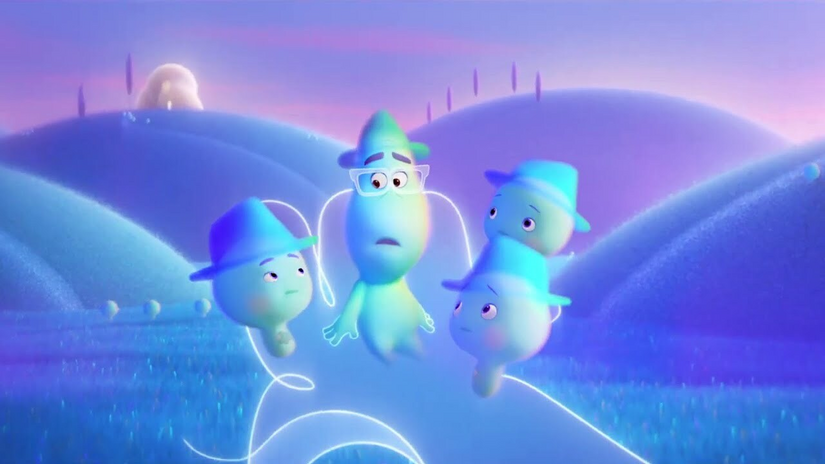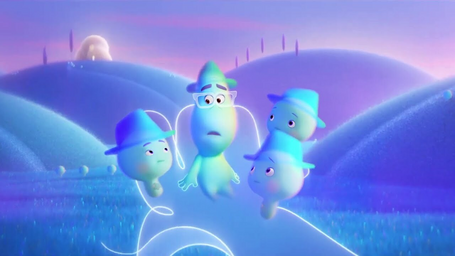This is not a review piece, but written for reviewing one’s life through the templates of The Good Place and Soul- an afterlife-based sitcom show and a movie respectively.
Disney’s Soul depicts a 30-year-old jazz pianist, Joe Gardner, whose life equals devotion and excellence in his craft. One day, he finally secures a dearly awaited dream- a major gig with a leading jazz personality. Unfortunately, before this can be accomplished, his life ends by accidentally falling into a manhole. His soul wakes up in The Great Beyond- an eerie white light for the musician who has an urgent vigor to live. Struggling to escape the absolute, he plunges into star-filled abyss and reaches the Great Before -a training camp where unborn souls are allotted varied personalities on a four- pointer scale, with the last aspect being an unknown spark clicking with a soul, resulting in the granting of an “Earth Pass”. Deceased noble personalities have held a step before the Great Beyond to ignite this final spark in the “Hall of Everything” where literally everything imaginable but earthily possible exists.
In case of mistaken identity, Joe Gardner is made the mentor of 22, who is an Earth-hating soul and who even Gandhi, Mother Teresa and Abraham Lincoln couldn’t mentor. The two oppositely motivated individuals team up as 22 promises to bequeath him her pass. Unable to find her spark of purpose, 22 takes him to a dimension where souls transgress in their “zone”- a blue light transcending between physical and metaphysical shining upon people who experience their focused passion to the fullest. Conversely, there are lost souls- big blobs of dark aggressive ghouls who have side-tracked from their life due to zone obsession. This brings to light the misnomer of often equating life with one’s one true/destined purpose that needs to be pursued at the cost of everything else in life- much like Joe Gardner who unabashedly and humbly married his craft at the expense of forgetting friends, family and most importantly living.
A series of events allows Joe to fulfill his dream, but after the performance, he feels no different and finds that life has not changed drastically. The dichotomy between our narrow psychological highs and the actual wholeness of existence is best shattered by 22, who arrives on Earth as Joe (due to a series of events). She finds joy and her spark in for granted aspects of existence like -the smell of pizza, knowing other people’s stories, watching a leaf fall from a tree. The movie leaves with the lesson -Your spark isn’t your purpose, the last box fills when you’re ready to live.
On a slightly different turn, The Good Place portrays an actual picture of after-life. The four human leads arrive at the Good Place after earning high points for their existence on earth … and oh! Meeting tragic deaths due to a single extreme absurdity of their being- Selfish, Indecisive, Impulsive and Envious. So why the Good Place despite their not so noble lives? Well, it’s the Bad Place disguised as Good Place to psychologically torture these morally corrupt dead. What follows are realizations, struggles and adventures of the four, plus an all-knowing humanoid (Janet) and the Bad Place architect (Michael).
The four characters embody extreme forms of four possible life values to base one’s life upon. Eleanor’s emotionless childhood has made her a hedonistic self-seeking “Arizona Gurl” who can’t be bothered about anyone but herself. Being a professor of ethics, Chidi questions every decision including but not restricted to choosing between muffins/hats, to the extent that his confusion becomes a real pain for others. Tahini competes with her genius sister and is extremely bothered by other’s opinions about her, thereby engaging in generous philanthropic pursuits only to maintain a good social image of herself. Jason is in simple words- none of the above, and that can be problematic, his reflex in any crisis being putting together a Molotov cocktail to set the room on fire.
The show’s premise is its biggest irony; the characters die and set out at becoming better beings. The actual Good Place reaches a point of saturation for its residents- Hypatia of Alexandria has forgotten Math! With infinity to live and infinite to do, they conversely lose a sense of challenge- an intrinsic part of human experience. The solution becomes a door through which one finally ends their journey (as themselves) in the universe and spark life by falling on Earth as small shiny fireflies like pixie dust, making random people engage in acts of goodness. The domino effect of self-improvement!
It’s a commentary on society and larger institutions of life as well. The afterlife realm has three main authority wielders- The Good Place Council- a bunch of diplomacy and procedure valuing individuals who have no passion for the real-time change, The Bad Place Architects (demons) and the Judge (the creator of the universe). They play an equitable and important balancing role in all decision-making processes, including the flaw in the points system for humans. As life on Earth became complicated, the points system was unfairly evaluating humans sending them in heavy numbers to Bad Place. For instance, in the 15th-century gifting a rose cut from your garden to your grandmother could be a simple act of love rewarded with afterlife points; now gifting a rose to someone means that harm is being inflicted upon the world in some way -carbon emissions or oppression of labor. There are unintended consequences to well-intentioned acts. After touring Earth in few seconds, the Judge concludes –“Life on earth is tough, and apparently they hate me down there”. The Judge was a female person of color according to earthly constructs. The system reforms by allowing all low scorers to improve in the afterlife by allowing them to act, reflect and act again until they become the Good Place versions of themselves -that’s pretty much life.
While we cannot concretely comment on the afterlife, we can do our best to grow in the here and now.


